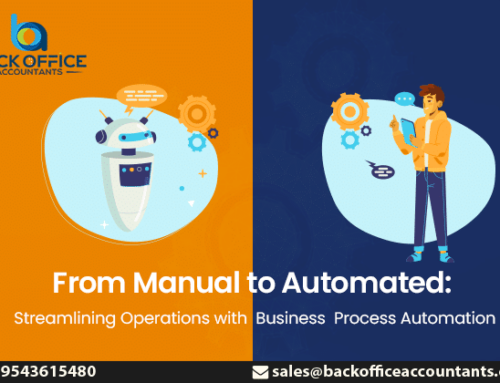In the complex world of finance, optimizing accounts receivable is still essential to long-term company success. To ensure a healthy cash flow, efficient invoicing, simplified billing procedures, and skillful collection tactics are essential. We explore 10 practical suggestions that have been painstakingly developed to improve accounts receivable invoicing procedures in this extensive guide.
1. Clarify Disputes Promptly
Ensuring timely payments and preserving positive customer relationships rely on promptly resolving billing issues. When differences appear, it is important to resolve them quickly using a structured procedure. First, start by expressing awareness of the subject at hand and confirming the concern. Additionally, addressing the issue in a timely and systematic manner can strengthen the relationship with the customer.
Examine the accounts receivable invoicing in great detail, contrasting messages and documents to see where the dispute originated. Be open and honest with the customer, outlining the actions you took to look into the situation. Give a concise explanation of your conclusions, citing any relevant data where appropriate.
2. Clear and Concise Invoices
The basic building block of accounts receivable management is the invoice. To minimize uncertainty and speed up the accounts receivable process, it is essential to create invoices that are clear and simple. Present all pertinent information first, including the billing date, the due date, the itemized charges, the conditions of payment, and any other relevant details.
Aim for a clean, uncomplicated style. Additionally, stay away from extraneous or cluttered design elements that might draw attention away from the important content. Furthermore, make use of readable fonts and a clear layout, ensuring that the receiver can easily comprehend the invoice.
3. Set Clear Payment Terms
To avoid misunderstandings and late payments, it is essential to establish clear payment conditions. For instance, indicate in detail the due date for payments, the accepted modes of payment, and the penalty for late payments. Additionally, outline any savings available for early settlements. By doing so, you ensure transparency and help prevent potential issues.
To establish mutual expectations, it is essential to clarify these words up front, ideally before delivering products or services. Furthermore, to emphasize the significance of these phrases, make sure they are clearly visible on contracts, invoices, and any other pertinent documents.
4. Personalize Communication
Personalized communication has an enormous impact on client relationships and collection efficiency in accounts receivable management. Specifically, positive and cooperative relationships can be fostered by customizing your interactions to the client’s preferences, payment habits, and unique situations. By doing so, you create a more tailored approach that strengthens client engagement and enhances the overall collection process.
Sort your clientele first according to their payment patterns, level of response, and particular requirements. As a result of this segmentation, specific communication tactics that are relevant to each group can be implemented. For instance, some clients might respond more positively to phone calls or personalized letters, whereas others may prefer email reminders.
5. Continuous Improvement
Efficiency optimization and process refinement for accounts receivable collection usually rely on continuous improvement. It uses a cyclical process of evaluating, refining and improving current tactics.
Seek input from both clients and internal teams alike. In fact, frontline employees’ perspectives on difficulties with billing or collections can be extremely helpful in streamlining procedures. Additionally, customer feedback might highlight areas that require improvement, particularly in terms of communication, payment convenience, or clarity.
6. Implement a Collections Calendar
Establishing a systematic timetable for collections not only expedites the procedure but also guarantees uniformity in the subsequent actions. First, sort clients based on the length of their accounts or their payment history. Next, create a timetable that clearly specifies when and how often the collecting operations for each client segment will take place. This structured approach ensures consistency and efficiency throughout the process.
This could involve calling, leaving notes, or starting the escalation process for past-due accounts. To automate reminders and start collection operations based on predetermined criteria, integrate this calendar with your accounting or customer relationship management software.
7. Automate Invoicing Processes
Automating invoicing procedures significantly streamlines the generation, delivery, and tracking of bills. As a result, it minimizes human errors and delays. To achieve this, you can use specialized invoicing tools or accounting software, which help automate both the creation and delivery of invoices.
Ensure uniformity throughout all invoices by personalizing the software’s invoice templates to contain all pertinent information. Establish automatic reminders for impending and past-due payments to enable prompt follow-ups without the need for human participation.
8. Customer Education
Transparency and trust are fostered, while at the same time, accounts receivable administration is greatly streamlined by educating your clients about your invoicing and payment procedures. To get started, put together readily available materials, such as FAQs, how-to videos, or manuals, that clearly describe your billing system’s special features, accepted payment options, and invoicing processes.
Customers should be proactively informed about these resources, whether through onboarding or recurring communications. Moreover, it is essential to highlight the advantages of understanding these procedures, such as reducing misunderstandings, accelerating dispute resolution, and ensuring more seamless transactions.
9. Set Clear Payment Terms
To prevent misunderstandings and disagreements, it is important to establish precise and unambiguous payment conditions. Your contracts, agreements, and invoices should clearly state the payment terms and conditions, approved payment methods, penalties for late payments, and rewards for early settlements.
Make sure your clients can quickly access these phrases and that you visibly communicate them. Emphasize the consequences for the business connection and the significance of adhering to these conditions.
10. Establish a Follow-Up System
An organized strategy for collecting past-due payments is necessary for efficient administration of accounts receivable. Establish a methodical follow-up strategy with specified procedures and deadlines for getting in touch with clients about overdue or delayed payments.
To customize follow-up techniques, divide up your client base according to their account age or payment history. Arrange for automatic messages or reminders to be sent out at certain times to encourage activity without being unduly bothersome.
At Back Office Accountants, we recognize how important effective accounts receivable management is to preserving a positive cash flow and building long-lasting client relationships. We want to take your financial operations to the next level by taking care of important things like fast dispute resolution, precise billing and payment terms, individualized communication, ongoing improvement, organized follow-up systems, and automated procedures.
We work to improve productivity and free you up to concentrate on your primary company activities by streamlining and optimizing your accounts receivable administration as an ally in your financial journey.







